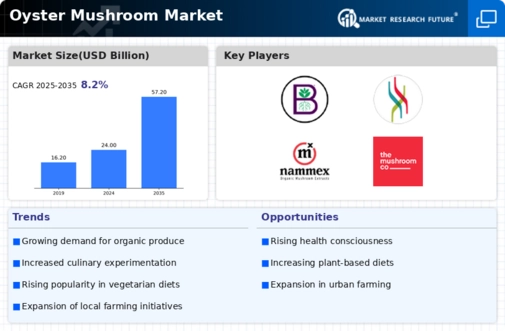Market Share
In the dynamic landscape of the US oyster mushroom market, effective market share positioning strategies are crucial for brands aiming to thrive in this specialized industry. A prevalent approach centers around product differentiation through cultivation practices and variety selection. Oyster mushroom growers often emphasize organic and sustainable cultivation methods, showcasing a commitment to quality and environmental consciousness. By offering unique varieties and ensuring the highest standards in cultivation, brands can distinguish themselves in a market where discerning consumers seek both flavor diversity and eco-friendly options.
Branding plays a pivotal role in market share positioning within the oyster mushroom segment. Establishing a distinct brand identity, complete with eye-catching logos, packaging, and transparent labeling, allows companies to create a memorable impression on consumers. Emphasizing factors such as locally sourced mushrooms, organic farming practices, and ethical harvesting contributes to building trust with consumers, fostering brand loyalty, and ultimately influencing market share.
Innovation in product presentation and packaging is another significant factor in the oyster mushroom market. Brands often explore eco-friendly packaging solutions to align with sustainability trends and appeal to environmentally conscious consumers. Additionally, offering pre-cut or ready-to-cook mushroom options can enhance consumer convenience, catering to the busy lifestyles of modern consumers and impacting market share by meeting their evolving needs.
Strategic pricing is a key element in market share positioning within the US oyster mushroom industry. Balancing affordability with perceived quality is crucial, and brands often explore pricing strategies that highlight the value of their premium products. Transparent communication about the benefits of organic cultivation, nutritional value, and culinary versatility helps justify premium pricing, influencing consumers and enhancing market share in a competitive market.
Distribution channels are integral in determining market share within the oyster mushroom sector. Brands strategically align themselves with grocery stores, farmer's markets, restaurants, and online platforms to ensure widespread availability. Collaborations with retailers who share a commitment to organic and sustainable products contribute to increased visibility, making it easier for consumers to access and purchase their preferred oyster mushroom brand.
Health and wellness trends have spurred the development of value-added oyster mushroom products, such as supplements, extracts, and powders. Brands that capitalize on the nutritional benefits of oyster mushrooms, promoting them as a healthy and versatile ingredient, can tap into a broader market. This strategic move aligns with the growing demand for functional foods, potentially expanding a brand's market share within health-conscious consumer demographics.
Digital marketing and social media engagement are powerful tools for connecting with consumers in the US oyster mushroom market. Brands utilize online platforms to share their cultivation processes, recipes, and sustainability initiatives. Engaging content, recipe collaborations with influencers, and educational campaigns can enhance brand visibility, influence consumer perceptions, and ultimately impact market share.
Sustainability practices are increasingly vital in the oyster mushroom industry. Brands that adopt eco-friendly cultivation methods, such as using recycled materials for substrate or implementing waste reduction initiatives, appeal to environmentally conscious consumers. Sustainability efforts contribute not only to a positive brand image but also influence market share by resonating with consumers who prioritize ethical and eco-friendly choices.






Leave a Comment